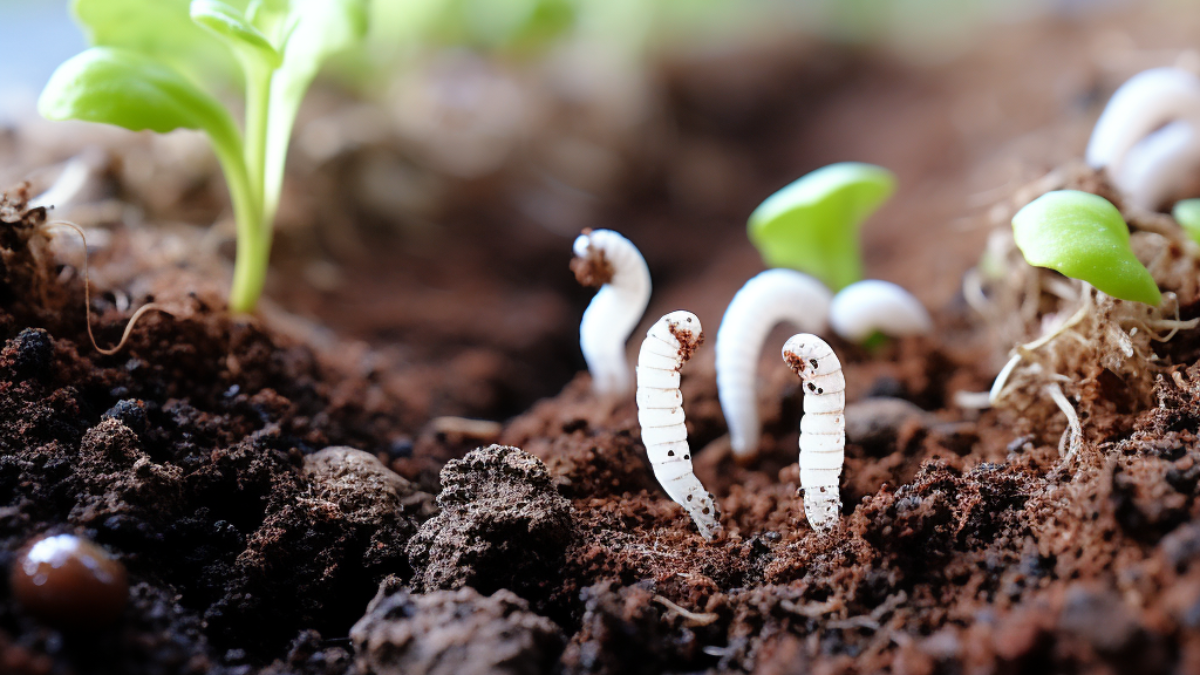As a gardening enthusiast, you take great pride in nurturing your plants and creating a thriving green oasis in your backyard. However, one day, while tending to your beloved plants, you notice something peculiar – tiny white worms wriggling around in the soil. Panic sets in as you wonder if these mysterious creatures are harmful to your plants or even a sign of a more significant problem. Fear not, for in this article, we will delve into the world of tiny white worms in soil, understanding their nature, and how to handle their presence in your garden.
The Enigmatic Inhabitants: Identifying the Tiny White Worms
The first step to unraveling this mystery is to identify the tiny white worms. These creatures are often millimeters in length and may vary in appearance. The most common types found in garden soil are:
Potworms
Potworms are small, translucent white worms that thrive in moist and organic-rich environments. They are often mistaken for pests, but in reality, they are beneficial to your garden. Potworms aid in breaking down decaying organic matter, contributing to the soil’s overall health.
- Springtails
Springtails are tiny, wingless insects that resemble small white worms. They are named after their ability to jump when disturbed. Like potworms, springtails are beneficial decomposers in the soil, aiding in the decomposition of organic matter.
- Fungus Gnat Larvae
Fungus gnats are small, mosquito-like insects commonly found in indoor plants. Their larvae are tiny white worms that feed on organic matter and fungi present in the soil. While the presence of fungus gnat larvae may indicate overwatering or poor drainage, they usually do not cause significant harm to healthy plants.
The Good, the Bad, and the Harmless: Their Impact on Plants
Now that we have identified these tiny white inhabitants, let’s explore their impact on your plants. The good news is that in most cases, these worms are harmless or even beneficial to your garden’s ecosystem.
Beneficial Decomposers
Potworms and springtails play a vital role in decomposing organic matter in the soil. They break down dead plant material, releasing essential nutrients back into the soil, which can then be absorbed by the roots of your plants. Consider them nature’s little composters, contributing to the overall health of your garden.
Fungus Gnat Larvae
Fungus gnat larvae, although often considered a nuisance, primarily feed on decaying plant material and fungi in the soil. They rarely cause direct harm to healthy plants, but their presence may indicate an imbalance in watering practices or poor soil drainage. Addressing these issues can help manage their population.
The Detective’s Guide: Managing Tiny White Worms
While tiny white worms are generally harmless or beneficial, some gardeners may still wish to manage their population. Here are some practical tips to maintain a healthy balance in your garden:
- Adjust Watering Practices
Overwatering can create conditions favorable for fungus gnats and their larvae. Allow the soil to dry slightly between waterings, preventing excess moisture buildup and deterring these insects.
- Improve Soil Drainage
Well-draining soil reduces the likelihood of fungus gnat larvae thriving in your garden. Consider adding organic matter like compost to improve soil structure and drainage.
- Natural Predators
Encourage natural predators that feed on fungus gnats, such as beneficial nematodes or predatory mites. These organisms can help control the larvae population in a natural and eco-friendly way.
Real-Life Encounter: A Potworm Story
Meet Sarah, an avid gardener who was initially alarmed when she discovered tiny white worms in her potted plants. Concerned that they might harm her precious plant collection, she sought advice from a seasoned gardener.
To her relief, the experienced gardener identified the tiny creatures as harmless potworms. He explained that these little wigglers were beneficial to the soil and would assist in breaking down organic matter. Sarah was delighted to learn that the potworms were her allies in maintaining healthy, nutrient-rich soil for her plants.
Conclusion: The Secret of Tiny White Worms
As our detective work comes to an end, we now know that tiny white worms in the soil are often beneficial or harmless to our plants. Potworms and springtails are valuable decomposers that contribute to the soil’s health, while fungus gnat larvae, although sometimes a nuisance, typically do not pose a threat to healthy plants.
Embrace the presence of these tiny white inhabitants as they work diligently behind the scenes, improving the condition of your garden soil. Remember, in the intricate world of gardening, every creature has a role to play, and maintaining a harmonious ecosystem is the key to a thriving and flourishing garden. Happy gardening, fellow green thumbs!



